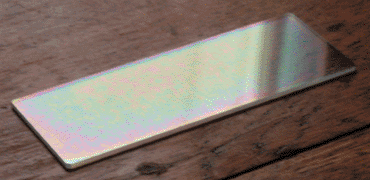
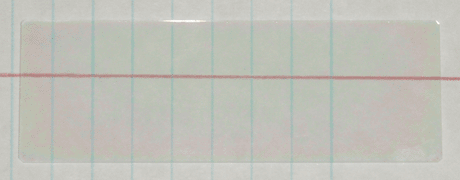
Due to an extremely high failure rate while attempting to further miniaturize my triode design, as well as due to the failure of my induction heater, I decided to take a short break from tube-making. During this break I plan to work on a side project, which requires the use of conductive glass. I decided to make this conductive glass by depositing a thin film of zinc oxide onto ordinary soda-lime glass via spray pyrolysis. Spray pyrolysis effectively consists of spray-painting a chemical solution onto a very hot substrate (in this case, glass), so that the solution will instantly decompose upon contact, yielding the desired thin film. For the film itself, I chose zinc oxide rather than tin or indium oxide, because it is by far the cheapest material to produce, and I had not yet seen anyone make it on a home lab scale. It also has some interesting chemical properties which I hope to utilize in the future.
While this process sounds complex, the necessary equipment is inexpensive and readily available. To heat the substrate, I improvised a high-temperature hot plate out of a camp stove and a piece of aluminum flat bar. To deposit the solution, I used a small air compressor and an airbrush from harbor freight. In retrospect, a squirt bottle could have been used just as easily, provided it was of high quality; I chose an airbrush because I wanted to guarantee that the mist would be fine and uniform, without large droplets that may crack the hot glass. This equipment can be seen below on the left.
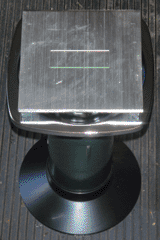
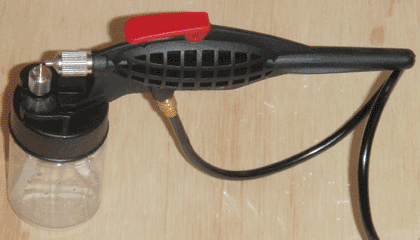
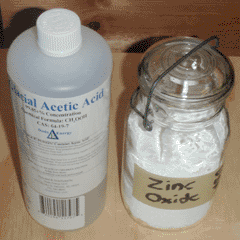
The solution itself is equally straightforward. I initially attempted to make a solution of zinc acetate (which decomposes to zinc oxide with heat) by dissolving pure zinc oxide powder in vinegar (5% acetic acid). The resulting solutions were too weak, however, and failed to produce a conductive film. In order to dissolve more zinc oxide, I ended up buying glacial acetic acid from Duda Diesel, which can be seen above on the right, next to the zinc oxide. This allowed me to make a more concentrated solution, requiring less deposition time and producing a denser film. The ingredients I used are as follows:
When mixed together and given time for the zinc oxide to fully dissolve, this produces a 1M concentration of zinc acetate in a solution of roughly 2% acetic acid. The excess acid helps keep the zinc soluble, since at a neutral pH it would begin to precipitate as zinc hydroxide. Once the solution was clear, I loaded a few mL into the airbrush and turned on the hot plate. A microscope slide was the test substrate, and had been cleaned beforehand using soap and water. Once the hot plate reached 500°C (meaured by a type K thermocouple meter) I began spraying the solution. To avoid cooling the glass, I sprayed in short bursts from a distance of about a foot, making quick passes across the slide from one end to the other. Once the airbrush ran out of solution, I turned off the hot plate and let it cool over the course of a half hour. I then removed the slide and began inspecting it.
The first thing I noticed was that the thin zinc oxide film produced an interference pattern, much like an oil puddle or a soap bubble, and this can be seen at the top of this article. This means the film is non-uniform, but it also allows me to estimate the thickness. Based on color charts found online, the film appears to be roughly 400-500 nanometers thick. This pattern can only be seen under certain lighting conditions, however, and when viewed straight-on, the glass is highly transparent. I then measured the resistance between two probes placed an inch apart in the center of the slide, which turned out to be about 500k ohms. This high resistance was largely expected, for a number of reasons. First, the starting materials were very pure, and un-doped semiconductors tend to have a high resistance. Second, the film was very thin, and due to its transparency I believe I could make it much thicker without blocking much light. This would also have the side effect of removing the interference pattern. Finally, the concentration of the solution has not been optimized for this application; this is just the first solution that worked.
Overall, this was very much just a proof of concept, and I fully intend to lower the resistance of the glass by multiple orders of magnitude in future experiments.